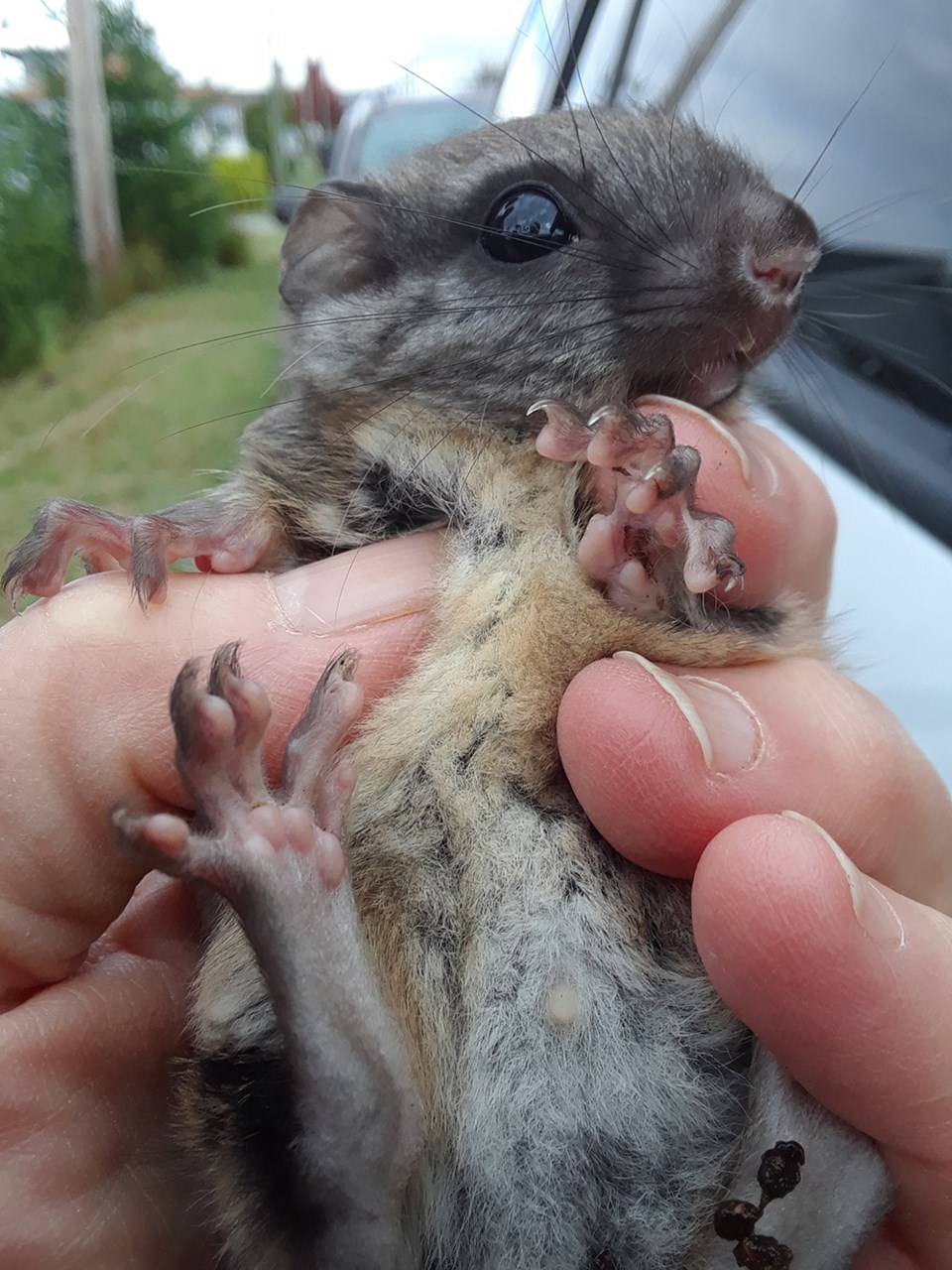WINGED MAMMAL: Part of a late litter and mangled by a cat, a flying squirrel was rescued on the Lower Sunshine Coast and sent on a ferry trip up the coast to Powell River Orphaned Wildlife Society (PROWLS).
In the time it took to make the journey, the wound had crusted over, but after cleanup, it proved to be superficial.
PROWLS president Merrilee Prior placed it in a crocheted pouch, fed it seeds, peanuts and grapes, and sent it on to MARS Wildlife Rescue in Merville, which has the proper facilities to care for it.
Because of the cold spring in the region, followed by the heat dome, the first litter had probably died. It was very late for such a youngster, and food was getting scarce.
After discussing the situation with the experts at MARS, it was decided that the little one would over-winter there.
Flying squirrels do not have a true hibernation, but go into a torpor (a state of physical or mental inactivity), from which they can wake and eat as needed. They are not capable of flight in the same way as birds or bats but are able to glide from one tree to another with the aid of a patagium, a furry, parachute-like membrane that stretches from wrist to ankle. Their long tails provide stability in flight.
They are strictly nocturnal, and their large eyes are very sensitive to light.




